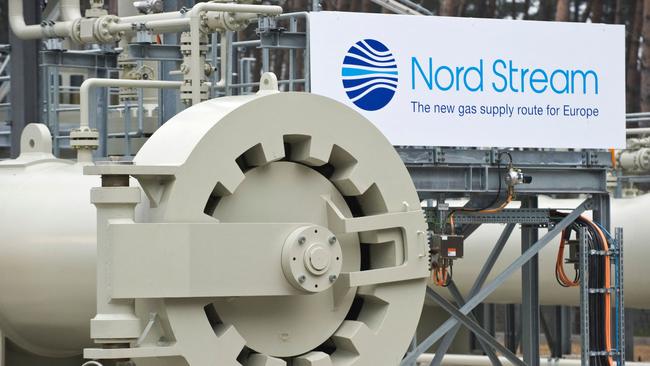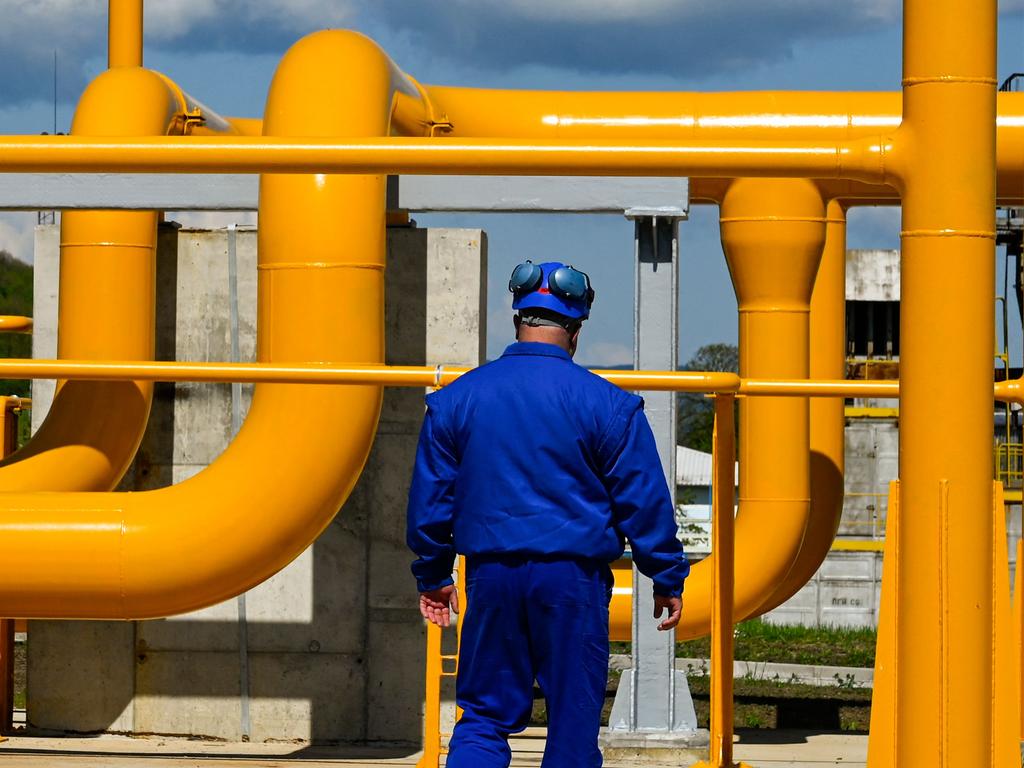Europe braces for Russia gas disruption this week - and years of higher energy prices
As the Nord Stream natural-gas pipeline goes down for maintenance, governments are preparing for the long-term impact of fuel scarcity.

Russia will shut its key Nord Stream natural-gas pipeline Wednesday for maintenance, leaving Europe guessing again about whether supplies will restart, as temperatures fall and demand for the fuel grows.
Whatever the outcome, European officials and energy executives say the continent faces years of high energy prices and possible shortages as efforts to replace Russian imports clash with limited supplies elsewhere and regulations that discourage hydrocarbon usage.
Due to a drop in consumption this year, Europe is on track to secure enough gas to avoid outright rationing this winter. However, its governments are struggling to secure supplies for next year and beyond, despite wooing top producers including from the US, Canada and Qatar.
Even if Nord Stream reopens Saturday as promised by Russian gas giant Gazprom PJSC, few Western politicians and economists think Europe will receive enough Russian natural gas next year because of expectations that the economic war with Moscow will intensify.
Pipeline gas from other regions besides Russia is flowing at full capacity, leaving the continent relying on liquefied natural gas, or LNG, from farther afield to offset the shortfall. Many experts think it won’t be enough, condemning Europe to years of high energy prices that will dent consumers’ budgets, drive energy-intensive companies out of business, and deplete public coffers as governments seek to soften the blow on society.
Europe must brace for five to 10 years of hardship, said Alexander de Croo, the prime minister of Belgium, one of Europe’s major importers of LNG.
Faraway gas producers like Qatar or the US need at least two years to ramp up production to meet surging European demand. And because many European nations aim to cut fossil gas use in the long term, they have been reluctant to sign the long-term purchase contracts these producers insist on. Some gas-rich nations such as Canada can’t boost production because of their own climate-change legislation limiting carbon dioxide emission, including a ban on new production in Quebec, which sits on vast reserves.
In the short-term, Europeans have acquired LNG on the spot market to meet gas shortages, mostly from Asian buyers who signed flexible long-term deals with US exporters and have rerouted cargoes to Europe, where gas prices have soared. Benchmark European gas prices hit $100 per million British thermal units last week – up more than 1140% from a year ago – before settling at $79.92 Monday. European natural-gas futures fell Tuesday as the European Union appeared on the cusp of filling its gas storage to sufficient levels to last through winter, and leaders said they would take measures to ease the continent’s energy crisis.
“For the past six months, Europe has become the demand centre,” said James Huckstepp, a gas analyst at S&P Global Commodity Insights.
While Europe looks unlikely to run out of gas in the immediate future, economists and many politicians fear current energy prices will test the region’s political stability and economic resilience if they hold at current levels.
Helen Thompson, professor of political economy at Cambridge University, said the shock reflects how Europe’s dependence on Russian energy became entrenched over decades.
“It’s not like these difficulties suddenly appeared, it’s just that Western politicians now scrambling for non-Russian energy sources find they are either in short supply, like LNG, or hard to come by, like oil,” she said.
EU nations are discussing proposals to cap electricity prices across the bloc. Some are also reconsidering years of environmental legislation to shut down nuclear power plants and reducing the use of fuels such as oil and coal.
Germany has announced it will restart idled coal-powered electricity plants this winter to free up gas and is reviewing a decision to shut down its last three nuclear plants at the end of 2022. It isn’t yet dropping laws mandating an end to fossil fuel usage beyond around 2040, however, complicating its bid to secure LNG from Qatar, which insists on multidecade contracts.
Because of this, Germany could struggle after the winter to refill its gas stores, now almost 80% full, said Sigmar Gabriel, a former German economy minister.
Since the outbreak of the war, only one German utility, EnBW Energie Baden-Württemberg AG, has signed a long-term LNG deal, with US firm Venture Global LNG, Inc. A spokeswoman for EnBW said that the company, which like most German importers had been using Russian gas, was refocusing on LNG.
Most long-term deals that US exporters struck following Russia’s invasion of Ukraine were with portfolio players such as Chevron Corp. and Shell PLC, which resell LNG under supply contracts or on a spot basis. As of mid-July, American export companies had sold 42% of contracted LNG to portfolio companies and just 17% to European buyers since March, according to consulting firm Wood Mackenzie.
While Europe easily outspent poorer nations – Bangladesh, for instance, is experiencing regular blackout because of gas shortages – efforts by Japan and South Korea to stockpile LNG ahead of winter and a possible economic rebound from China as it emerges from lockdowns could increase competition for global LNG supplies and drive prices even higher, analysts said.
Even if more supplies were to become available in the short term, bottlenecks at Europe’s re-gasification facilities limit how much excess LNG cargoes the U.K. and parts of Northwest Europe can absorb, consulting firm Rystad Energy said.
Germany doesn’t yet have a single LNG terminal to receive overseas shipments. The government has leased four floating terminals – giant ships that dock near industrial ports and can process LNG back into gas – and a fifth is being commissioned by a private consortium.
The five temporary terminals each have a capacity of about 5 billion cubic meters a year, meaning that they collectively couldn’t even replace half of the annual Nord Stream flow, which is used to supply countries across Europe. In addition, new infrastructure such as pipelines must be built to channel the imported gas toward consumers.
Mario Levesque, president of Utica Resources Inc., a gas exploration and production firm from Quebec that explored a supply deal with Germany, said that it would take at least 18 months for his company to procure vessels to ship a limited amount of gas to Europe.
“I don’t see big solutions for Europe,” said Mr Levesque. “They are going to have to lower consumption.”
The Wall Street Journal




To join the conversation, please log in. Don't have an account? Register
Join the conversation, you are commenting as Logout